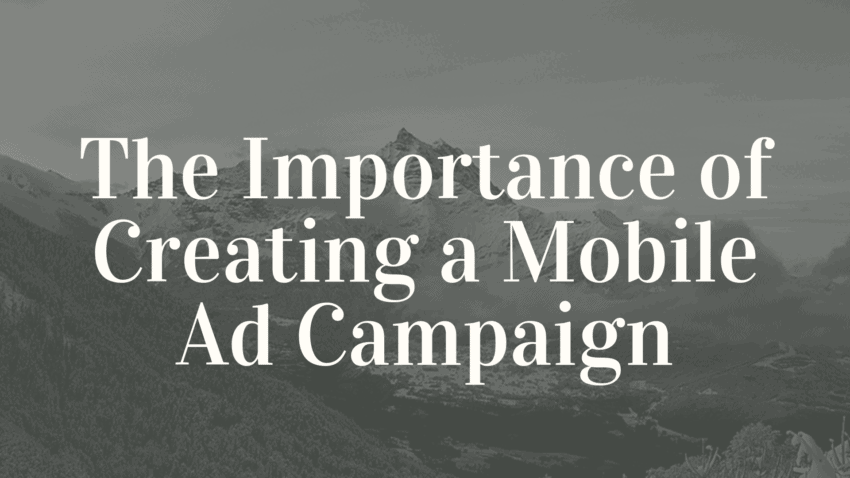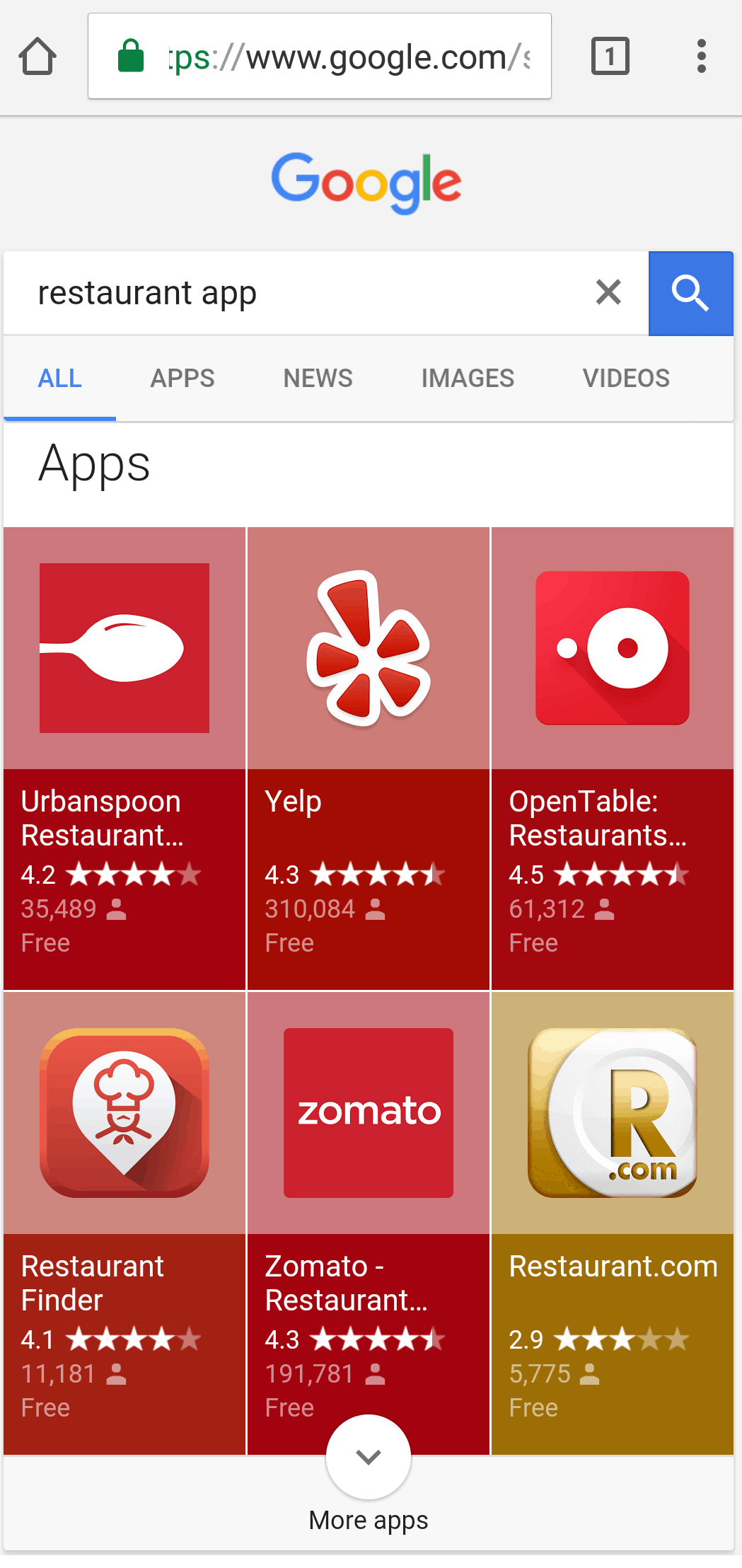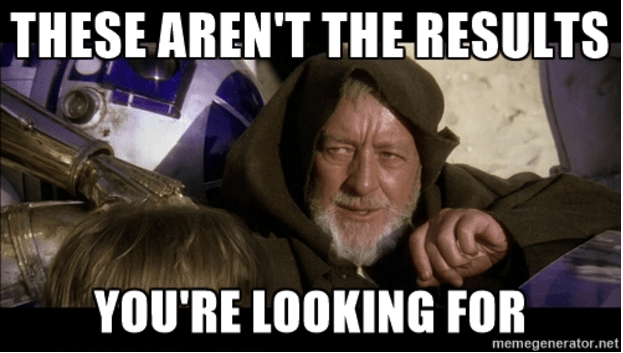The Importance of Creating a Mobile Ad Campaign

The dominance of mobile usage isn’t just imminent–it’s here. If you don’t have a clear mobile ad campaign strategy to promote your brand on mobile devices, you’ll fall behind your competitors. So get ahead by investing in mobile ads.
Who are the Mobile Users?
Mobile users aren’t just tweens on social media. They are also business users checking their email, searching on Google, and making purchases. A lot of important decisions are now made on tablets and smartphones by the modern professional. Go to any public place, and you’ll see someone working from a phone.
You might need to convince clients or managers that mobile is worth investing in, but the important point to stress is that mobile plays a crucial role in the modern buyer’s journey. According to Bing, fifty percent of people in the U.S. use their smartphones 150 days per day. When your customer picks up the phone to search, you want to be found. Not your competitors.
Why you need a mobile ad campaign strategy
Having a mobile site is just the first step of your strategy. While Google has pretty much made responsivity mandatory for SEO purposes, mobile is often still an afterthought. In fact, Google is gearing up to prioritize mobile search results over desktop search results. The time is right for you to do the same.
What makes mobile unique? The intent of the consumer hasn’t changed, but the device and context have. The goal of mobile advertising isn’t always conversion, it’s branding. Mobile users usually aren’t ready to make a purchase, but they want information immediately. Think of how often you might do initial research from a tablet but sit down at your desktop to actually use your credit card to finish an order. The benefit of mobile is that customers can answer questions they have or find a business that fulfills their needs with just a few clicks.
Marketers can’t just rely on organic search results on mobile any longer. The number of organic search results on the first page has dropped to an average of 8.5 on both mobile and desktop–with results in organic mobile searches skewing fewer than desktop results. Also keep in mind that a smaller screen directly affects how mobile users are viewing those SERPs. Mobile is likely to show rich results in the form of App Packs and knowledge graphs, taking up valuable organic results space.
Now, more than ever, you need to create a sustainable mobile ad campaign strategy so your customers can find you at the top of the page.
Here are some ways you can use mobile ads on Bing, Google, and Facebook to your advantage.
Call extensions
Call extensions aren’t just for B2C users with a brick and mortar location. Agencies in the insurance or banking industry need call extensions, too. If your service is complicated, users will want to speak to an actual person. They need questions answered that might not be available on your FAQ pages. It’s not just that your number needs to be visible, you need to make it clear to your prospective customer that you’re willing and able to talk to them. Having a call extension will give you an edge over a competitor with an equally complex service.
Bing, Google, and Facebook offer call extensions. But as of posting this, only Google has click to call exclusive ads. Enable call tracking and ensure to ask customers on the phone how they found you. Tracking these analytics is necessary for measuring your call extension success.
Allowing customers to call you with the click of a button is instant gratification at its finest.
Video
Mobile users spend more time watching videos than desktop users. In fact, watching mobile videos tends to command more attention than desktop videos (desktop viewership is often interrupted by multitasking). This provides a great context to introduce yourself to a new audience.
There is a large variety of mobile video advertising networks for you to choose from. Do your research before you settle on the placement of your video ads. Think of your audience and make a decision from there. However, there are two standouts to consider.
Facebook doesn’t skew younger anymore since its user base is aging. A lot of businesses are taking advantage of this by enabling video ads on Facebook that work for both mobile and desktop. Social accounts are a huge portion of mobile usage, so why not show up in everyone’s favorite social app?
Youtube
If your target audience’s age range is 18-34, Youtube is for you. The majority of Youtube’s audience falls within that age bracket.
One benefit of advertising with Youtube are TrueView in-stream ads. These are the ads that allow users to skip after five seconds. You only have a to pay for a view if the user watches the complete video or the first thirty seconds, whichever comes first. You will also pay if a user clicks your ad. This is a powerful ad type because it gives you a clear indication of who is interested in your message. It also still gets your brand in front of new users regardless of interaction. Just make sure your video starts off strong and you include important information about your brand in those first five seconds.
Focus on your app
So many Americans start their day using apps. They are arguably the most important aspect of mobile marketing, and the biggest game-changer when adjusting your strategy from desktop to mobile.
If your company has an app, it’s imperative that you start a mobile ad campaign. It’s not enough to build a CTA on your homepage and an email campaign. There are a few additional steps you should take to create the best experience.
Expanded text ads
Google’s expanded text ads are mobile ads that allow you to use 15 extra characters total (five in your headline and 10 in your description) in your search ads. These ads give you 80 characters for your description without a line break, allowing more flexibility. Giving customers more information is always a great idea. Use the additional characters to include more information about your app, enticing users to download.
App Installations
Driving installations might be the crux of your mobile ad campaign, so use ad formats that directly promote app installation.
Both Google and Facebook have app installation ads. In Google AdWords, you can include app install extensions right on your search or display network ads. This extension will send customers to the app store or Google Play where they can download your application.
On Facebook, users can download your app from app install ads right from their newsfeed. Create an attractive image less than 20% text, a catchy headline, and let that “install now” button do the rest.
While Bing does not offer app install extensions, you can use their sitelink extensions to navigate users to an app install page on your website or an information page about your app.
App Packs
App Packs are how lists of relevant apps will appear in your mobile Google search results.  App Pack ranking directly correlates to the keywords used in your app title and description. Since these users are searching on Google and not in the app store, include “app” in your description. Star rankings will also affect your rank and CTR.
App Pack ranking directly correlates to the keywords used in your app title and description. Since these users are searching on Google and not in the app store, include “app” in your description. Star rankings will also affect your rank and CTR.
While Google has only hinted at it, it is also recommended that you index your app for a slight increase in App Pack search results.
Bing does not have this capability. However, if your Google Play or app store page ranks organically on Bing, an “install” button will appear next to the search result bringing you to the page.
Remarketing
Remarketing is the most powerful tool when it comes to app engagement. By using app engagement ads, you can announce new features to those already using your app. Re-engage the customers you may have lost immediately after download. Encourage those who are using your app regularly to continue using it by keeping them informed about updates.
Engagement ads are available on Facebook and Google.
Does this mean desktop ads aren’t as important?
No. Of course not! Mobile advertisements need to be used in tandem with desktop advertisements to create a complete experience for your prospective buyers.
In order to reach your customer, and the greatest number of your customers, you need to be available on their smartphones, tablets, and desktops each time they bring up a results page.
One of the biggest reasons you should begin advertising on mobile (whether it’s Bing or Google), is to get in on it now. The number of users who are doing business searches on mobile devices will only increase as time goes on. Establish yourself now instead of finding your competitors with the edge over you later on.
You don’t need to do it all
As with all advertising, it’s important to bear in mind that your product or service will directly impact which type of mobile advertising works best for you. The way you use mobile ads needs to support your overall goal. Don’t be afraid to give up on call extensions if the calls you’re getting are irrelevant or infrequent. If your customers aren’t into video, don’t use it. While having a mobile ad campaign is necessary, using all available ad types isn’t. So start small, monitor your campaigns frequently, measure your ROI, and make changes where you need to.
If you have your mobile site set up and social media updating regularly, it’s time to use mobile advertisements to attract the right people at the right moment. DemandZEN is a Google Certified Partner with experience in Google, Bing, and Facebook ads. Ask us for help with your mobile ad campaign strategy, we’d love to see you succeed.
You Might Also Enjoy These Posts
Demand Generation vs Lead Generation
Gamification Strategies: Badges in B2B Marketing
Welcome To DemandZEN
DemandZEN specializes in Account-Based Demand Generation and solving the challenges around finding, engaging and converting target accounts into real opportunities for B2B Technology and Services companies.



